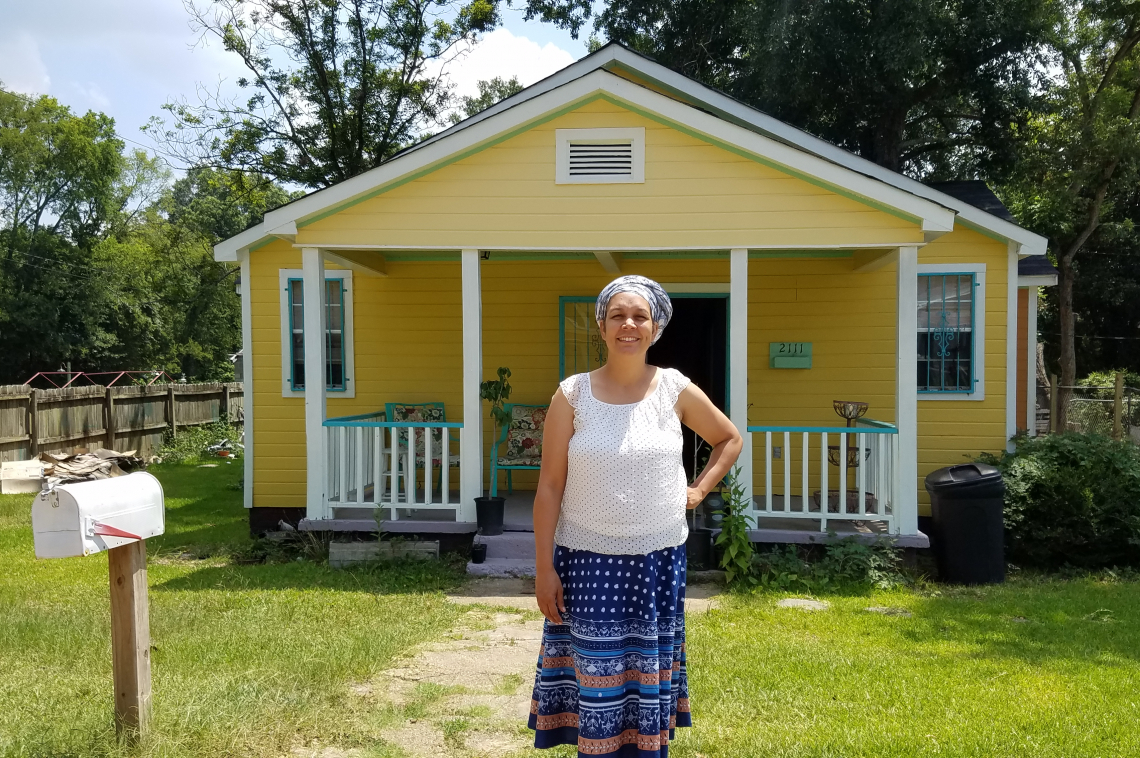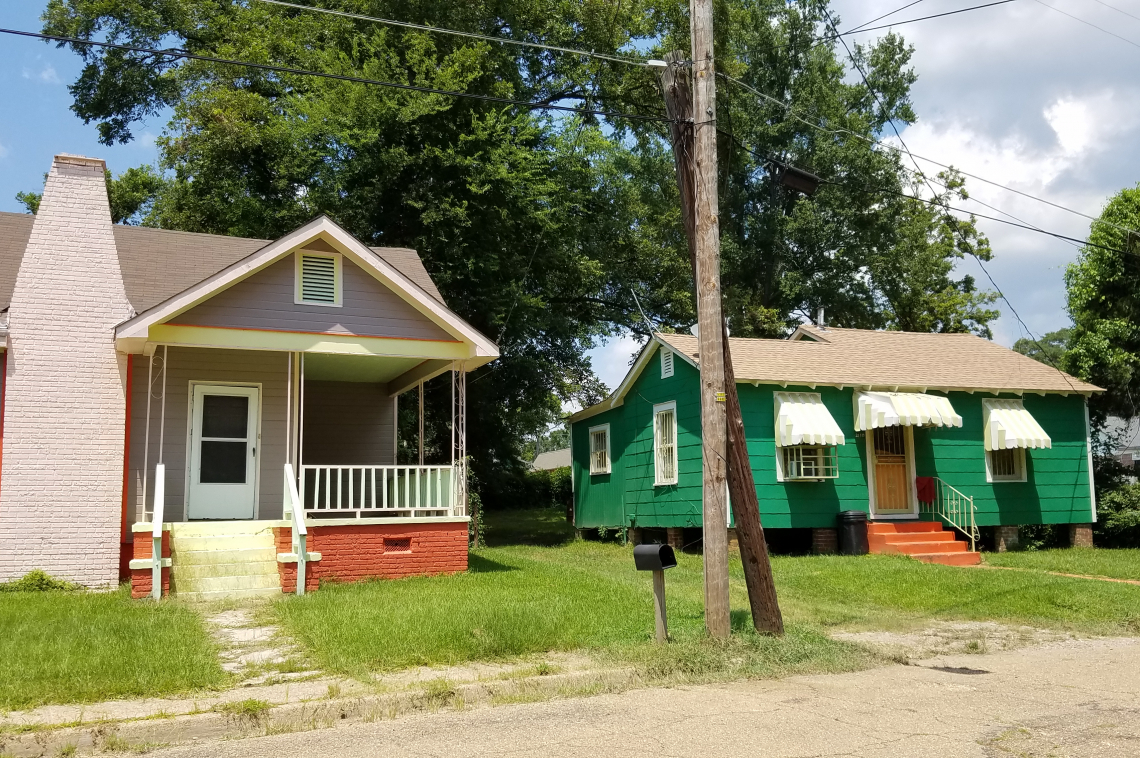

In 2014 ArtPlace was lucky enough to meet Nia Umoja, of the Cooperative Community of New West Jackson (CCNWJ). This was the first time we had funded in Mississippi, and it was exciting to be a small part of this grassroots neighborhood collective as they built a sustainability model neighborhood from the ground up the inside out.
They believed from the beginning that the people who live, work and play in a neighborhood should be at the helm of any community envisioning process and directly benefit from any economic development—not just as consumers. Self-determination, self-reliance, self-respect and self-defense cast the vision for the community and determining its destiny. They believed that every resident has the right to contribute to the Cooperative’s development through participatory democracy. Founded in 2013, this effort represented a first step toward reknitting the fabric of this fractured neighborhood.
"Around 1,200 people live in this 8-block area - 98% of whom are Black. In our neighborhood, there is 89% poverty rate. Everyone just walks to the mailbox to collect their unemployment check. The education in Mississippi is F-rated, and in this area there are no grocery stores or restaurants."
The group saw from the beginning that the area had great wealth building potential because of its central location, inexpensive commercial and residential property and the unique character of the community. When they started their work, private developers and outside interest groups had already begun speculating the area for eventual gentrification, potential bad news for local residents. With local partners and grant money, CCNWJ discreetly began to acquire property.
What they’ve achieved
They’ve achieved their goals, and then some. In 4 years, they have built a farm, bought 65 properties for $100,000 which includes homes, vacant lots and commercially zoned property., working on 16 in the last few years. They are in the process of developing how to hold the land in trust, a tricky proposition in Mississippi. They have created 5 Airbnb rentals that now employ local residents as house keepers and landscapers and have proved an exercise in thrifty good management and keen foresight. “The Mulberry guesthouse cost $5,000 to buy. It cost $7,500 dollars to fix up with salvageable materials with all of the work being done by neighborhood residents and youth apprentices- what we call our "Neighbor Labor" crew. In less than a year it has made $28,000 and all the money goes directly back into the project. Just the guest houses alone will bring in $12,000 per month which sustains the youth apprentice program. Soon there’ll be a walk-up ice cream parlor, Appleshack (a fiber arts studio space) and a library in a tree. People don’t want to leave anymore. They want to stay here and build and maintain their own homes.”
They did all this with the community- not for it. “When we first arrived, we sat down with people and asked them what they needed. Overwhelmingly they came up with three things: we need to make money, we need to clean up and we need to have something for the kids to do. We did a skills assessment and found out that 95% had an agricultural background so we decided to make a farm. We now operate a $5 CSA (Cooperatively Sharing Abundance) and have started selling surplus produce to the local food hub. Residents get $40 worth of organic produce and a two person share for just $5 bi-weekly. If they work an hour a month their subscription is equally exchanged (they pay nothing!). Residents are catching on, now starting to grow vegetables among flowers, planting small plot gardens in their backyards; even the neighborhood drug kingpin is keeping chickens and growing food for sale. This is the start of what we hope will develop into a cooperative farmer's market."
Art in Community
Residents are learning how to apply their artistic and cultural expression into the aesthetic of each creative reuse strategy and are beginning to understand that they have the ability to lead their own revitalization efforts. Community in being reintroduced in this area. Residents interact with each other based upon trust, respect and reciprocity.
"We need creative thinkers on the ground modeling how we turn the place around. We are helping people reimagine what the place could be, what they could be. Arts and culture are an intrinsic expression relating people to place, and taking on a character that is dictated by community conditions given its historical and socio-economic context. Through it, residents share their collective experiences, embrace their past and determine their future together. Seeing their creative and physical labor put to work to transform their community allows the residents to begin to trust in their ability to develop their neighborhood in the way that best represents who they are. This process to stimulate and enhance creative action is art in itself."
Nia Umoja is leading residents in building a true cooperative, by creating an environment where people can work together toward a viable alternative value system for the mutual benefit of the neighborhood. Sounds like the pure dictionary definition of ‘cooperative’ as involving mutual assistance in working toward a common goal.
“We are in the business of shifting people through the path to empowerment- taking them from despondency (living in a state of perpetual hopelessness because your future is uncertain) to determination (the understanding that we control our destiny). CCNWJ residents [are creating] a cooperative economic development strategy that is building real community wealth and overall wellness.
“This is a long-term vision, but it does not have to take 30 years. We have made tremendous change in five years. A change in people; how they think and feel. This is part of the artistic work of the creative place maker. It’s my job to help people see the future. It’s my job to help people to see their potential. I am an artist and visionary, but definitely do not do this work alone! The process of engagement is one that meets people in place where they are by creating pathways and opportunities for residents to engage the work in the cultural comfort of their space at their own pace. The values-driven artistic process has made transformation accessible and real for residents, restoring self-reliance, purpose and creative vision.”
Opportunities
Book one of the lovely Airbnb rentals to support the neighborhood
Go be an artist in residence and work with the local people for a few months (email communications [at] artplaceamerica.org to get in touch with Nia)
Donate 5k so they can buy another house. (email communications [at] artplaceamerica.org to find out how)





